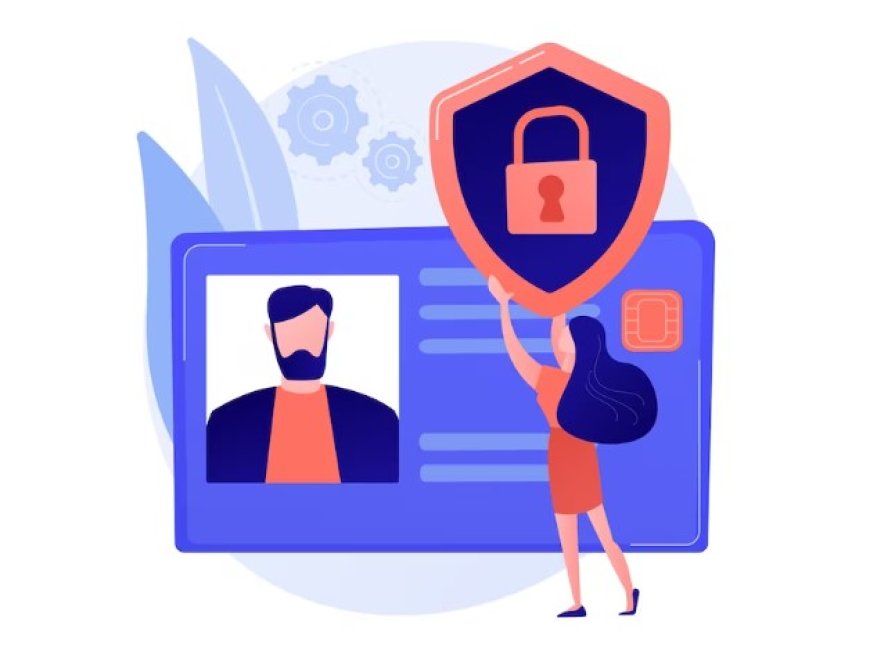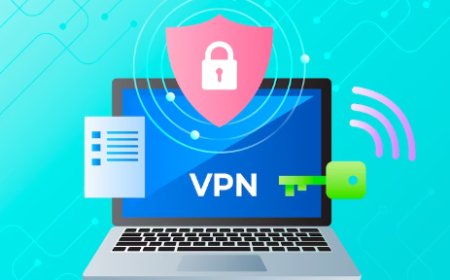Identity And Access Management
Explore identity management, access control, security, authentication, authorization, IAM, compliance, policies, user roles, governance, and systems.

In today's digital landscape, where data breaches and unauthorized access are significant concerns, Identity and Access Management (IAM) plays a crucial role in ensuring the security of digital identities and controlling access to resources. IAM refers to a set of policies, processes, and technologies that enable organizations to manage and control user identities, authenticate users, and regulate their access to systems, applications, and data. It encompasses various aspects such as user provisioning, authentication, authorization, and identity lifecycle management. Effective IAM practices are essential for protecting sensitive information, mitigating security risks, and maintaining compliance with regulatory requirements.
Importance of IAM in today's digital landscape
-
IAM ensures that only authorized individuals have access to sensitive information, reducing the risk of data breaches and unauthorized access.
-
IAM helps organizations prevent insider threats by implementing strict access controls and monitoring user activities.
-
IAM enables organizations to enforce access policies and track user activities, ensuring compliance with data protection and privacy regulations.
-
IAM simplifies the process of managing user accounts, provisioning and deprovisioning access, and enforcing consistent security policies across the organization.
-
With the increasing adoption of remote work, IAM allows organizations to securely manage and authenticate user access to resources from various locations and devices.
-
IAM plays a vital role in enabling digital transformation initiatives by ensuring secure access to cloud services, APIs, and other digital resources.
-
IAM solutions can provide a seamless and user-friendly experience by enabling single sign-on (SSO) and self-service password reset options, enhancing productivity and user satisfaction.
The purpose of this blog post is to provide a comprehensive overview of Identity and Access Management (IAM) and its significance in today's digital landscape. It aims to explore the key concepts, benefits, and best practices of IAM, empowering organizations to implement effective identity and access control measures for enhanced security and streamlined user management.
Understanding Identity and Access Management
What is IAM?
IAM, which stands for Identity and Access Management, refers to the framework and set of processes and technologies used to manage and control user identities and their access to various systems, applications, and resources within an organization. IAM ensures that the right individuals have the appropriate level of access to the right resources at the right time, while also enforcing security measures and maintaining compliance. It encompasses authentication, authorization, user provisioning, and other identity-related activities, helping organizations maintain data confidentiality, integrity, and availability while managing user identities and access privileges effectively.
Key components of IAM
-
Managing the entire lifecycle of user identities, including creation, modification, and termination.
-
Verifying user identities and granting appropriate access privileges based on roles, permissions, and policies.
-
Enforcing granular access controls to ensure users can only access the resources and data they are authorized to.
-
Allowing users to authenticate once and access multiple applications and systems without the need for multiple login credentials.
-
Automating the process of creating user accounts, assigning access rights, and removing user access when no longer needed.
Benefits of Identity and Access Management
Implementing Identity and Access Management (IAM) offers several benefits to organizations:
Enhanced security and reduced risks:
IAM helps protect sensitive data and resources by ensuring that only authorized individuals have access. It enables robust authentication, authorization, and access control mechanisms, reducing the risk of unauthorized access and data breaches.
Improved compliance and governance:
IAM helps organizations meet regulatory requirements and industry standards by enforcing access policies, tracking user activities, and maintaining audit trails. It facilitates compliance with data protection regulations such as GDPR, HIPAA, and PCI DSS.
Increased operational efficiency and productivity:
IAM streamlines user management processes, such as user provisioning and deprovisioning, password resets, and access requests. It reduces administrative overhead, enables self-service capabilities, and improves productivity by granting users timely access to the resources they need.
Seamless user experience and convenience:
IAM provides a seamless and user-friendly experience by implementing features like single sign-on (SSO), allowing users to access multiple applications with a single set of credentials. It reduces the need for remembering multiple passwords and enhances user convenience.
Common Challenges in Implementing IAM
-
Complexity of implementation and integration with existing systems
-
Balancing security and user convenience
-
Ensuring proper governance and policy enforcement
-
Managing identities across diverse systems and platforms
-
Keeping up with evolving technologies and threats
-
User resistance to change and adoption
-
Scalability and managing IAM for large and growing organizations
-
Cost of implementation and maintenance
-
Ensuring consistent and accurate identity data
-
Addressing potential privacy concerns and data protection regulations
Best Practices for Effective Identity and Access Management
Effective Identity and Access Management (IAM) is crucial for maintaining a secure and well-managed environment. Here are some best practices to consider:
-
Develop a well-defined IAM strategy that aligns with business goals and incorporates all necessary components, such as user provisioning, authentication, and access controls.
-
Implement strong authentication mechanisms, such as multi-factor authentication (MFA), to verify the identities of users and mitigate the risk of unauthorized access.
-
Grant users the minimum privileges necessary for their roles and responsibilities. Implement role-based access controls (RBAC) to ensure users only have access to the resources they need.
-
Conduct periodic reviews of user access rights to ensure they remain appropriate and necessary. Remove or modify access for users who no longer require it.
-
Implement robust monitoring and auditing capabilities to track user activities and detect any suspicious or unauthorized behavior. This helps in identifying potential security incidents and enforcing accountability.
-
Provide regular training and awareness programs to educate users about the importance of security, password hygiene, and safe computing practices to prevent security breaches.
IAM technologies and Solutions
IAM technologies and solutions play a crucial role in implementing effective identity and access management practices. Here are some key technologies to consider:
User directory and identity management systems:
These solutions provide a centralized repository for managing user identities, including user profiles, authentication credentials, and access privileges. They streamline user provisioning, deprovisioning, and identity lifecycle management.
Multi-factor authentication (MFA) solutions:
MFA adds an extra layer of security by requiring users to provide multiple factors of authentication, such as passwords, biometrics, or hardware tokens. This significantly enhances the security of user logins and helps prevent unauthorized access.
Privileged access management (PAM) tools:
PAM solutions help manage and control privileged accounts, which have elevated access privileges. They enforce strict controls and monitoring for privileged accounts, reducing the risk of misuse or compromise.
Identity federation and Single Sign-On (SSO) solutions:
These solutions enable seamless and secure access across multiple systems and applications using a single set of credentials. Identity federation establishes trust relationships between different organizations, while SSO allows users to access multiple resources without having to re-enter credentials.
Implementing these IAM technologies and solutions can greatly enhance the security, convenience, and efficiency of managing user identities and access. Organizations should assess their specific needs and choose the appropriate tools that align with their IAM strategy and goals.
Emerging Trends in Identity and Access Management
Emerging trends in Identity and Access Management (IAM) are shaping the future of identity and security management practices. Here are some notable trends:
Identity as a Service (IDaaS):
IDaaS solutions provide cloud-based identity management services, offering organizations scalable and flexible IAM capabilities without the need for extensive on-premises infrastructure. IDaaS simplifies IAM implementation and management, especially for organizations adopting cloud services.
Adaptive authentication and risk-based access controls:
IAM solutions are incorporating adaptive authentication methods that assess the risk associated with each access attempt and adjust the authentication requirements accordingly. Risk-based access controls allow organizations to dynamically enforce stronger authentication measures for high-risk activities and provide a seamless experience for low-risk activities.
Blockchain-based identity management:
Blockchain technology is being explored for secure and decentralized identity management. It offers the potential to create immutable and tamper-proof digital identities, enhancing trust and security in IAM systems.
Biometric authentication and behavioral analytics:
Biometric authentication, such as fingerprints, facial recognition, or iris scans, along with behavioral analytics, are gaining prominence as advanced methods to verify user identities. These technologies leverage unique physical or behavioral characteristics to enhance security and provide a seamless user experience.
Identity and Access Management (IAM) plays a crucial role in today's digital landscape by ensuring secure and controlled access to resources. Key takeaways for organizations to enhance their IAM practices include implementing a comprehensive IAM strategy, adopting strong authentication methods, enforcing least privilege and role-based access controls, regularly reviewing and updating access privileges, monitoring user activities, and educating users on security best practices. As the landscape evolves, organizations should consider emerging trends such as Identity as a Service (IDaaS), adaptive authentication, blockchain-based identity management, and biometric authentication. By staying informed and implementing effective IAM practices, organizations can strengthen their security posture and protect their valuable assets in an increasingly connected world.




































